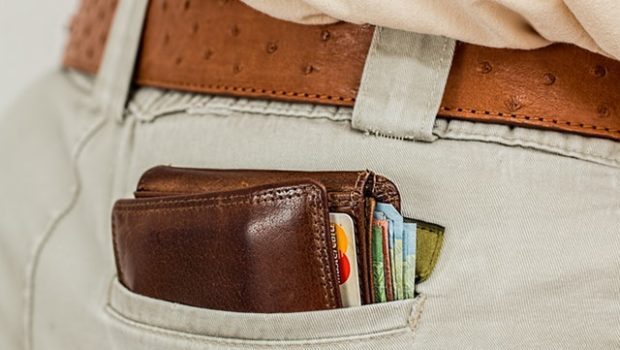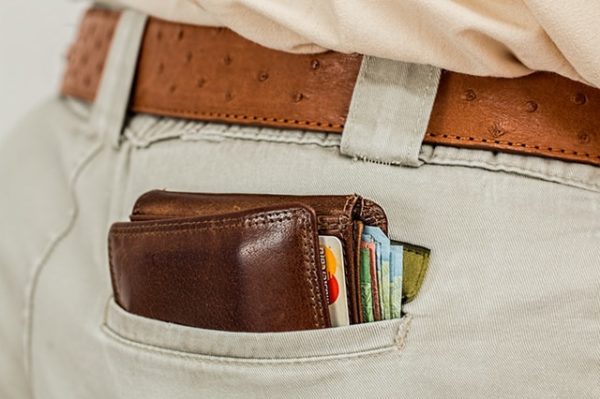5 Tricks to protect yourself from credit card fraud and theft
Protect yourself against credit card fraud and theft.
According to the Bureau of Consumer Protection of the Federal Trade Commission, https://www.ftc.gov/about-FTC/bureaus-offices/bureau-consumer-protection, 4 out of 10 Americans have experienced or will experience credit, debit, or identity theft. Finding relief from credit card fraud and debt requires proactive thinking. The best advice is to avoid being a victim to credit card fraud and theft.
Credit card fraud or theft is a broad term used to indicate some sort of commercial activity, or transaction, with someone’s credit or debit card without their consent. The fraudulent activity may include acquiring goods such as food or electronics or obtaining cash funds from an account. Identity theft and credit card fraud are in the same ballpark. However, identity theft is the unauthorized use of someone’s name or personal information including driver’s license and social security numbers to obtain credit with the intent to purchase goods or obtain cash funds. Credit card theft, therefore, is not to be confused with identity theft. Stealing a credit or debit card number and pin happens when someone uses someone’s credit card numbers and pin obtained fraudulently from banking documents or online and procures a line of credit using someone else’s identity credentials. The incidence of credit card fraud and theft causes billions of dollars in losses each year in the US.
Internationally, the US and India follow behind China and the United Arab Emirates in third place among countries with the highest rate of credit card fraud and theft. Worldwide, most nations have taken preventive measures to avoid losses from credit card fraud and theft. Because there is no guaranteed you will find any relief from the consequences and responsibilities encountered by individuals and financial institutions once credit card fraud and theft have occurred, prevention is the best medicine.
One of the best relief options developed has been the microchip technology which allows storing data on a microchip placed on credit cards. The magnetic stripe does not need to be used when carrying out a credit or debit card transaction when credit cards contain a chip. However, while European, Middle East, and Asian nations have widely adopted the chip technology preventive measure against credit card fraud, the US lags behind in the adoption of this relief method against fraud and theft of credit and debit cards.
If you want to get relief from credit card fraud and theft, follow these five pro-active behaviors
1. Do not leave your smartphone unlocked when you’re not using it
Information stored on your smartphone may be accessed by others if your phone is unlocked. Always lock your phone when you are not using it.
2. Never throw away banking documents containing bank account numbers
Use a shredder to dispose of any banking documents with credit card numbers.
Your name, address, and other financially sensitive information are obtained from trash bins all over the world by unscrupulous people looking to commit fraud.
3. Do not use a public computer to access your bank or credit card account if you can avoid it.
Many computers do not have security software or are at risk due to the expiration of security software on computers. Shopping and banking online put you at risk of credit card fraud and theft. Especially when accessing your accounts from public computers.
4. Do not reply to emails or calls asking for your credit or debit card information.
In the US, most people don’t give their credit card information over the phone, but 5% of them still do. In some cases, when systems are down, people will ask for your card information over the phone. Stop, let them know you finish the transaction whenever their system has been restored. later.
5. Never write your pin or password down on a piece of paper and carry it along with you.
Those who cannot remember their new pins or passwords sometimes carry a list of them along when they travel, running the risk of losing the list to defrauders. Sticky notes may end up in the wrong hands.
There are several ways in which the most common form of credit card fraud and theft can happen. Searching through dumpsters is the most low tech form or style used by defrauders. Thieves are known to go through waste receptacles in search of discarded billing statements from which they can get your banking information and commit fraud. But there are high tech defrauders who specialize in computer hacking. Retail stores, restaurants, and banks are at risk of being hacked. Credit card numbers and pins can be obtained from the video cameras placed in Automatic Teller Machines. So cover your pin when you punch it in at the ATM. Also, cashiers, clerks, and waiters, just to mention a few, could be dishonest people who are looking to commit fraud with stolen credit card numbers. These individuals may take photos of your card. Next thing you know, there are charges made on your account that you had nothing to do with. In some cases, you may get a call offering a discounted travel deal or a free trip. They will ask you to provide your billing information and add you to the list of eligible customers. Joining the club is another way of putting yourself at risk of credit card fraud or theft.
Establish a few good daily habit practices to avoid being a victim of credit card fraud. It may be too late to find relief once the damage to your credit has already been done. Wherever you are, don’t give your credit card account number to anyone, even if you have done business with them before. Use a secure electronic transaction (SET) when you purchase items online or in person. Refrain from lending your credit card to friends and family. Don’t leave your cards, receipts, or statements lying around on desks or counters where someone can take pictures of them or walk away with them. Shred all your banking statements when you no longer need them.
Many people have a separate location to keep their credit cards in their wallet. That way when you need to use them is the only time they will be exposed. When you do get your card out and use it, make sure you keep an eye on it and get it back from the retail workers who take it. Make sure to never sign a blank receipt and to get a receipt from every transaction you make one. Compare your receipts to the statements and notify your card issuer if there are any discrepancies.
If you change addresses, let your bank and card issuer know your new address ahead of time to avoid lost statements and other communication letters that may compromise your card numbers. When you receive mail from banks and card issuers, open the mail right away. Sometimes, there is important information about your cards. Get into the habit of reconciling your bank or credit card accounts with your purchases.
When you realize your card has been stolen or used fraudulently, notify the banking institution that issued the card right away. Many companies have 24-hour credit card fraud hotlines to report lost or stolen cards. After making the call and notifying the institution, the law protects you from further responsibility for charges you didn’t make. The most that you will end up paying would be a fee of $50. In some cases, you may be required to swear under oath that you were not the person who made the purchases on your card.
















